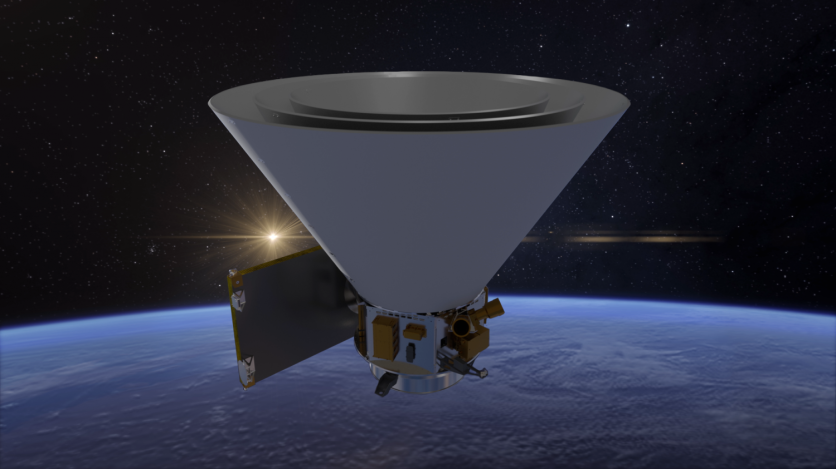NASA is embarking on a grand mission to map the expansive universe with the construction of the SPHEREx space-based observatory.
The mission's objective is to meticulously map 450 million galaxies and 100 million stars, offering unprecedented details and a spectrum of colors.
The SPHEREx telescope, which stands for Specto-Photometer for the History of the Universe, Epoch of Reionization, and Ices Explorer, is taking shape at NASA's Jet Propulsion Laboratory (JPL) in Southern California.
This observatory is a significant undertaking as it stands nearly 8.5 feet tall and stretching almost 10.5 feet wide.

SPHEREx's Design
Central to SPHEREx's design are cone-shaped photon shields, assembled with layers of lightweight yet robust materials. These shields, nestled within one another, form a protective barrier against the Sun and Earth's light and heat.
As the spacecraft maneuvers through the sky, it will execute scans akin to examining the inside of a globe, completing two comprehensive all-sky maps annually.
Sara Susca, deputy payload manager and payload systems engineer at JPL, emphasizes the agility required for SPHEREx as it swiftly scans the celestial expanse, stating," SPHEREx has to be quite agile because the spacecraft has to move relatively quickly as it scans the sky. It doesn't look that way, but the shields are actually quite light and made with layers of material like a sandwich."
"The outside has aluminum sheets, and inside is an aluminum honeycomb structure that looks like cardboard - light but sturdy."
Scheduled for launch no later than April 2025, SPHEREx holds the promise of unlocking profound insights into the origins of life's essential components, such as water. The mission's focus extends to measuring the abundance of water ice in interstellar clouds where stars are born and planets take shape.
Additionally, SPHEREx aims to delve into the cosmic evolution of galaxies by studying the collective light they emit.
Read Also : NASA's James Webb Finds Two of the Most Distant Galaxies Nearly 33 Billion Light Years Away
Infrared Eyes
SPHEREx uses infrared light detection so it operates in a wavelength range beyond human vision, often referred to as heat radiation. To prevent interference with its detectors, the telescope must maintain a frigid temperature below minus 350 degrees Fahrenheit.
The outer photon shield deflects light and heat from the Sun and Earth, while the V-groove radiator, featuring conical mirrors, expels excess heat, ensuring SPHEREx remains at its operational temperature.
At the heart of SPHEREx lies its telescope, equipped with three mirrors and six detectors. Tilted on its base, the telescope maximizes its sky coverage while shielded by photon barriers. It was built by Ball Aerospace in Colorado and it underwent rigorous testing, including vibration simulations, to verify mirror focus post-launch.
SPHEREx's detectors play a pivotal role in observing the infrared wavelengths crucial to the mission's objectives. The telescope employs spectroscopy, breaking down light into its component wavelengths, much like a rainbow.
The filters atop the detectors are about the size of a cracker and appearing iridescent. This enables scientists to capture specific infrared wavelengths emitted by observed objects. With the ability to observe over 100 distinct wavelengths, SPHEREx is poised to generate universe maps of unprecedented detail and significance.





